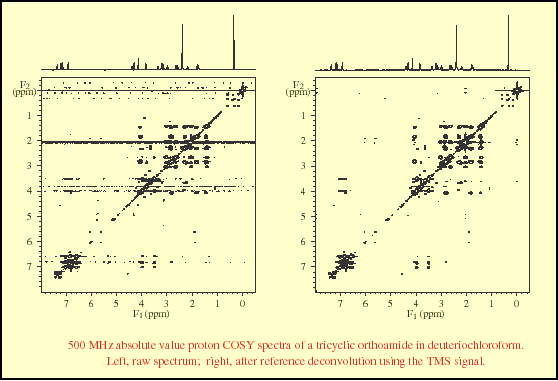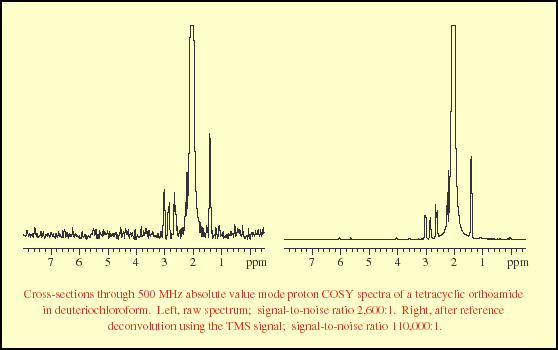All experiments are imperfect, but in NMR the great majority of
instrumental imperfections affect all signals equally. This means
that if a signal (e.g. of a reference material such as TMS) can
be identified for which the theoretical form is known, the discrepancies
between theory and experiment can be used to calculate a correction
which restores not just the reference signal, but all the signals
in the spectrum, to their correct form. This turns out to be surprisingly
simple; the FIDDLE algorithm (Free Induction Decay Deconvolution
for Lineshape Enhancement) developed at Manchester has proved
highly successful. Improvements in performance of an order of
magnitude have been achieved in experiments such as NOE difference
spectroscopy (widely used for structure elucidation) and chiral
purity assays (vital in the pharmaceutical industry). One of the
most impressive applications is the suppression of t1-noise in
2D NMR; recent work has shown signal-to-t1-noise ratios of over
100000:1.


Morris research group home page
Please send any comments or questions about these pages to:
g.a.morris@manchester.ac.uk
Most recent revision 15th April 2007